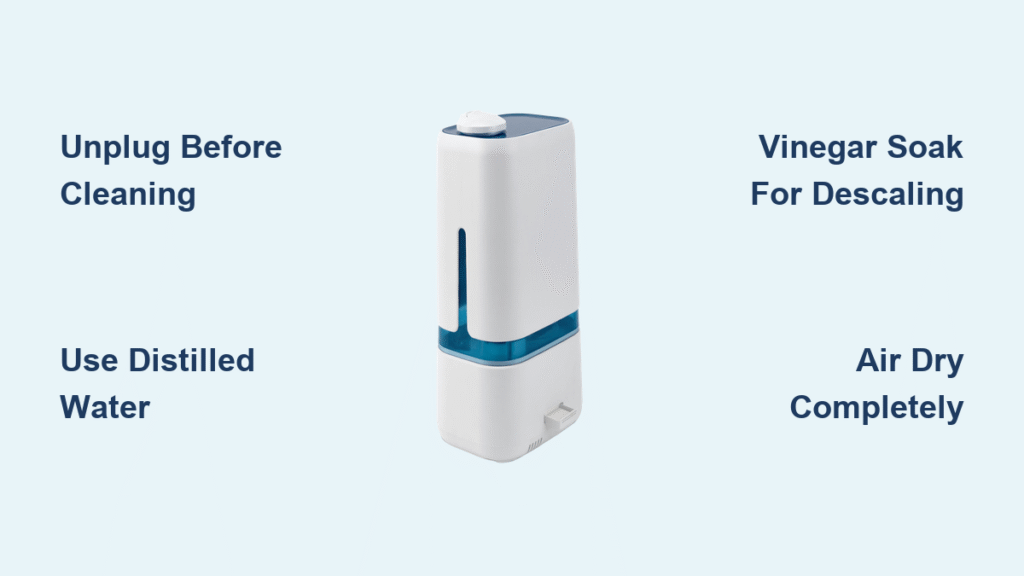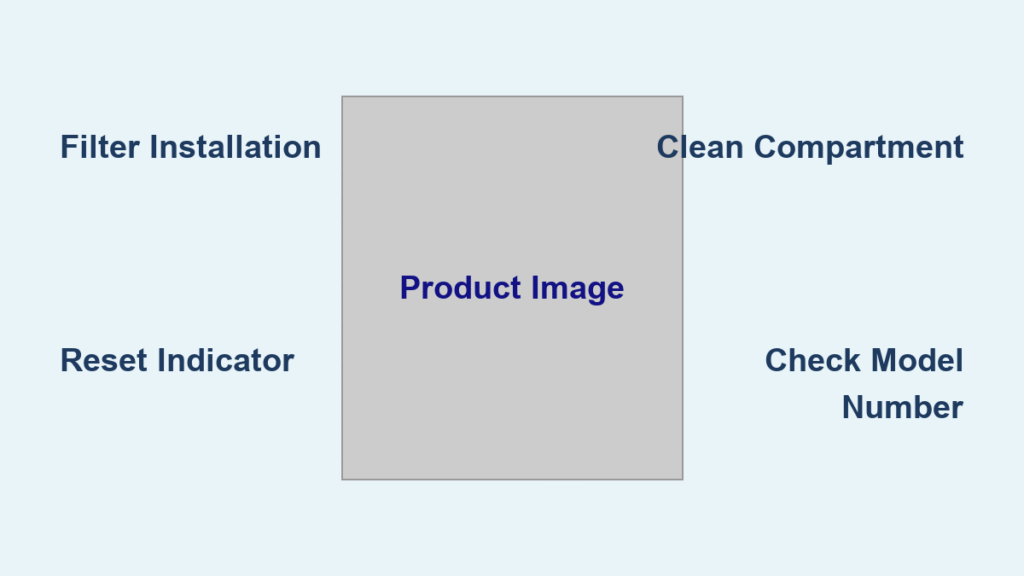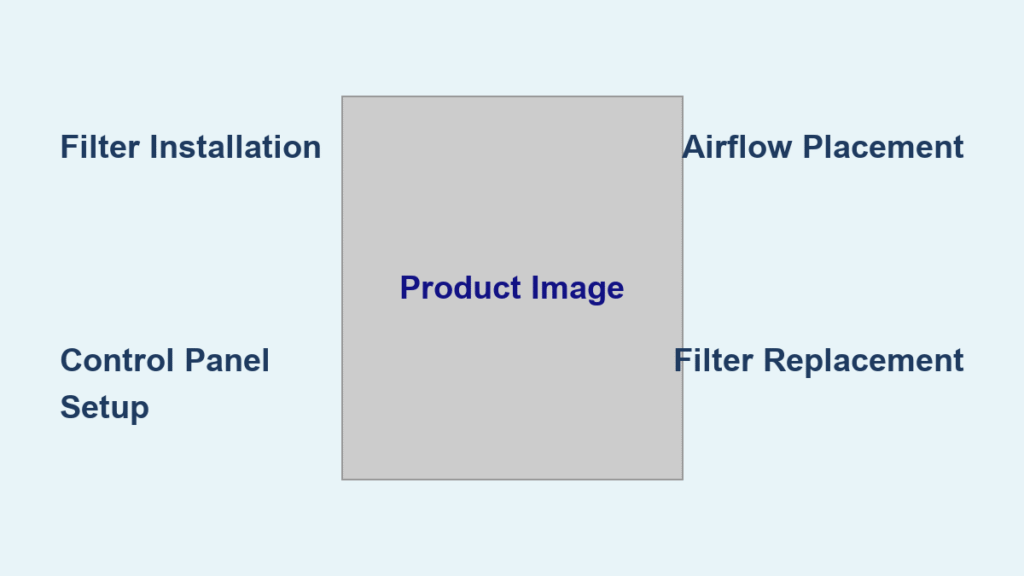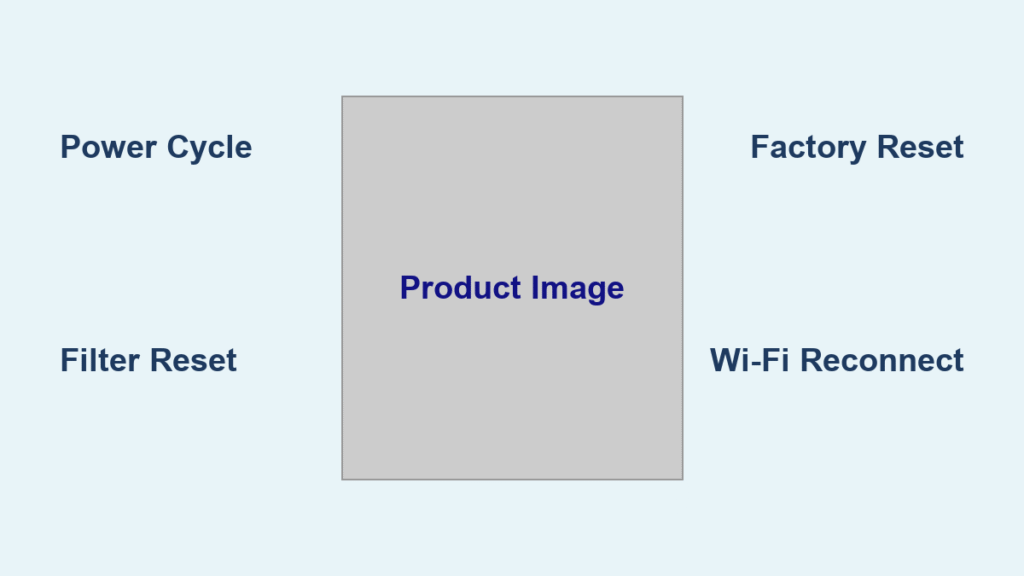That faint musty smell when you turn on your Levoit humidifier? It’s not just in your head—it’s a warning sign that mold and bacteria have taken up residence in your water tank. When neglected, your humidifier transforms from a health ally into a contaminant distributor, pumping harmful microbes into the air you breathe. The solution? A simple 20-minute cleaning ritual that prevents 90% of humidifier problems before they start.
Most users don’t realize their humidifier requires more attention than just refilling the tank. Without proper maintenance, mineral deposits clog internal components while stagnant water becomes a breeding ground for dangerous pathogens. This guide delivers the exact cleaning process Levoit technicians recommend to keep your unit producing clean, healthy moisture all season long.
Why Your Levoit Humidifier Needs Weekly Cleaning
Stagnant water creates the perfect environment for bacteria to multiply rapidly—sometimes doubling every 20 minutes. Within days, your humidifier’s tank becomes a microscopic petri dish that disperses contaminants directly into your breathing space. The white film forming on tank walls? That’s mineral buildup from tap water that restricts mist output and damages internal components over time.
Essential Disassembly Steps You’re Probably Skipping
Unplug and power down completely before touching any components—never clean while the unit is connected to power. Remove the water tank by lifting straight up, then detach the filter housing. The base chamber lifts away easily once these components are separated. For models with a noise silencer cap or removable mist nozzles, set these aside in a separate container.
Pro tip: Snap a quick photo with your phone before disassembly. This visual reference eliminates reassembly confusion, especially for first-time cleaners who struggle with component orientation.
Rinse and Dry Components Thoroughly (The Right Way)
Run room temperature water through each component for 30-60 seconds, focusing on the tank’s interior walls where biofilm often forms. Shake excess water from the filter gently—never wring it out as this damages the delicate filtration media. Pay special attention to the float mechanism; trapped water here causes inaccurate water level readings.
Air drying takes longer than you think. Set components on a clean towel for 2-4 hours in a well-ventilated area. Any remaining moisture invites mold growth, so verify dryness by touching interior surfaces before reassembly. When in doubt, wait an extra hour—rushing this step defeats the entire cleaning purpose.
Vinegar Descaling That Actually Works on Levoit Models
Mineral deposits appear as white, chalky buildup on tank walls and base components. These deposits reduce mist output by up to 40% and eventually cause mechanical failure. Vinegar dissolves these minerals safely without harsh chemicals that could damage your unit’s sensitive components.
Vinegar Solution Preparation (Exact Measurements Matter)
Use exactly 3 US cups of distilled white vinegar per cleaning session. This quantity ensures complete coverage without waste. Avoid apple cider vinegar or other varieties—they contain sugars that feed bacteria instead of eliminating them. Pour the vinegar directly into the water tank, allowing it to flow naturally into the base chamber as it drains.
Critical mistake to avoid: Never mix vinegar with bleach or other cleaning chemicals. This creates dangerous fumes that can damage your respiratory system and the humidifier’s internal components.
Soaking and Scrubbing Process for Stubborn Deposits
Set a timer for exactly 15-20 minutes—longer soaking doesn’t improve results and risks damaging plastic components. While the tank soaks, submerge smaller components in a vinegar-filled bowl:
– Float mechanism
– Filter housing
– Noise silencer cap
– Any removable mist nozzles
Use a soft-bristle toothbrush specifically for humidifier maintenance to scrub stubborn deposits. Apply gentle pressure in circular motions, focusing on crevices where minerals accumulate. Rinse each component under running water until the vinegar smell disappears completely—this usually takes 30-60 seconds per part.
Water Quality Impact on Cleaning Frequency
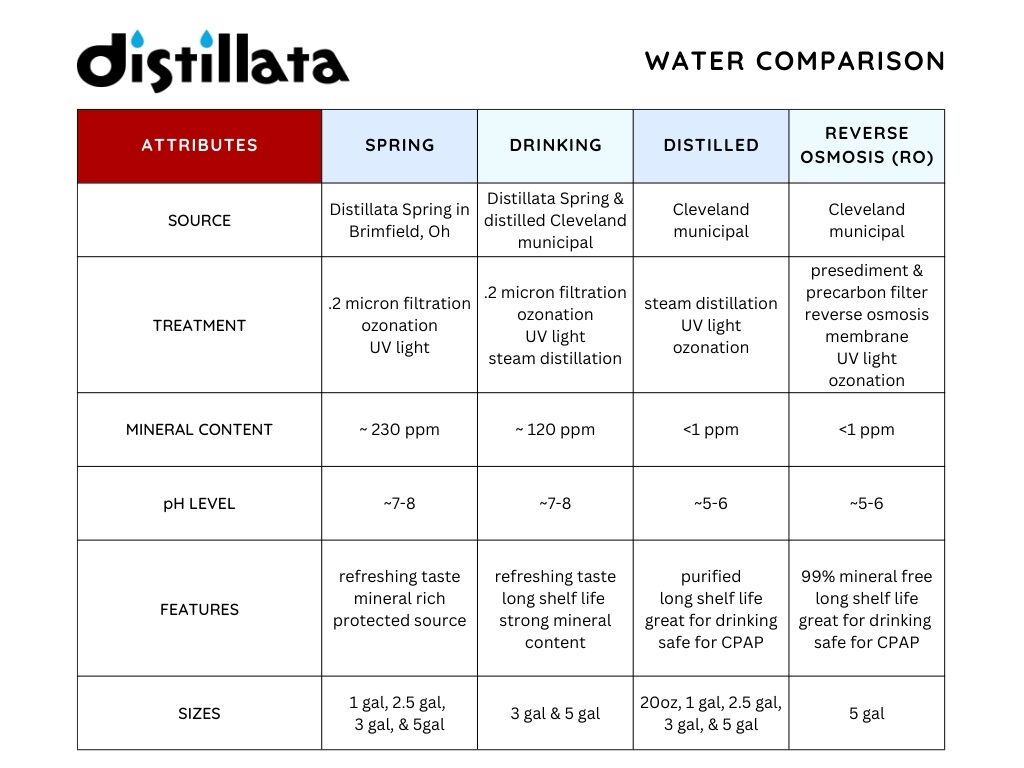
The water you pour into your Levoit humidifier directly affects how often you need to clean it. Tap water contains minerals, chemicals, and microorganisms that accelerate contamination and buildup, forcing you to clean twice as often.
Why Distilled Water Works Best for Levoit Units
Distilled water has been boiled and condensed, removing 99.9% of minerals and contaminants. This prevents:
– White dust accumulation on furniture and electronics
– Rapid mineral scaling inside the tank that reduces mist output
– Bacterial contamination from waterborne organisms
Cost analysis: A gallon of distilled water costs $1-2 and lasts 3-5 days. Compare this to the $50-100 replacement filters you’ll buy more frequently when using tap water. The math shows distilled water pays for itself in extended unit lifespan.
Room Temperature Water Requirements
Cold water shocks internal components, while hot water can warp plastic parts. Room temperature distilled water flows smoothly and prevents thermal stress on seals and gaskets. Never pour refrigerated or recently boiled water into your humidifier—this temperature shock damages sensors and reduces mist production efficiency.
Optimal Humidifier Placement Strategy for Less Cleaning

Where you position your Levoit humidifier affects both cleaning frequency and air quality. Poor placement creates localized moisture problems that seem like humidifier malfunctions but actually stem from improper positioning.
Central Location Benefits That Reduce Maintenance
Place your unit 3-4 feet from walls on a raised, stable surface. This strategic positioning enables:
– Even moisture distribution throughout the room
– Reduced condensation on walls and windows
– Better airflow that prevents mold growth around the unit
– Less mineral buildup from proper evaporation rates
Pro tip: Elevate your humidifier on a small table rather than placing it directly on carpet—this improves air circulation and prevents moisture damage to flooring.
Avoid These Placement Mistakes That Increase Cleaning Needs
Corners concentrate moisture in one area, creating damp spots that breed mold and accelerate internal contamination. Near electronics invites water damage when mist settles on screens and keyboards, while direct sunlight accelerates algae growth in the water tank. Never place your humidifier where mist can directly contact walls—this creates perfect conditions for black mold development.
Common Cleaning Mistakes That Damage Levoit Units

Even diligent cleaners make errors that reduce effectiveness or damage their units. Recognizing these pitfalls saves time and prevents costly replacements.
Over-cleaning dangers: Cleaning more than weekly strips beneficial bacteria that naturally prevent harmful growth. It also wastes water and cleaning supplies without additional benefits. Stick to the weekly schedule unless visible contamination appears sooner.
Filter care errors: Never use soap or cleaning chemicals on filters. These products leave residues that become airborne when the unit operates. Instead, rinse filters gently and replace them according to manufacturer guidelines—typically every 4-6 months.
Incomplete drying problems: Reassembling damp components traps moisture in sealed areas. This creates the exact mold and bacteria growth you’re trying to prevent. When in doubt, let parts dry an extra hour.
Quick Reference Cleaning Checklist for Busy Owners
Save this 5-minute preparation routine for consistent weekly maintenance:
Before Starting:
– [ ] Unplug unit completely and wait 5 minutes
– [ ] Empty remaining water into sink
– [ ] Gather supplies: vinegar, soft brush, clean towel
Cleaning Process:
– [ ] Disassemble all removable parts following photo reference
– [ ] Rinse components with room temperature water
– [ ] Soak tank with 3 cups vinegar for exactly 15-20 minutes
– [ ] Scrub mineral deposits gently with soft-bristle brush
– [ ] Rinse until vinegar smell disappears completely
– [ ] Air dry all parts 2-4 hours on clean towel
Reassembly:
– [ ] Verify all components are bone-dry before assembly
– [ ] Reassemble unit following your reference photo
– [ ] Fill with room temperature distilled water only
– [ ] Test operation for 5 minutes before regular use
Maintenance Schedule for Peak Levoit Performance
Weekly: Basic cleaning and component drying
Monthly: Deep descaling with vinegar soak for 30 minutes
Every 4-6 months: Filter replacement with genuine Levoit parts
Annually: Inspect power cord and seals for wear or damage
Following this schedule prevents 95% of humidifier problems. Your Levoit will deliver clean, healthy moisture for years while avoiding the white dust and bacterial contamination that plague poorly maintained units. The weekly 20-minute investment ensures you’re actually improving your indoor air quality rather than introducing new health hazards.
Remember: consistency beats intensity. Properly learning how to clean Levoit humidifier prevents the need for emergency deep cleaning sessions and extends your unit’s lifespan significantly. When you maintain this simple routine, your humidifier becomes the reliable health ally it was designed to be—delivering pure, clean moisture that actually benefits your respiratory system instead of compromising it.

